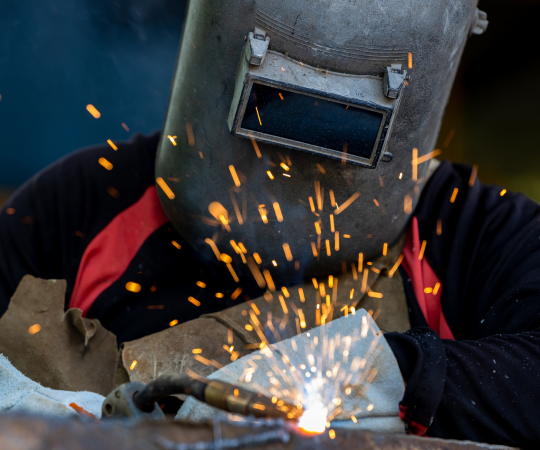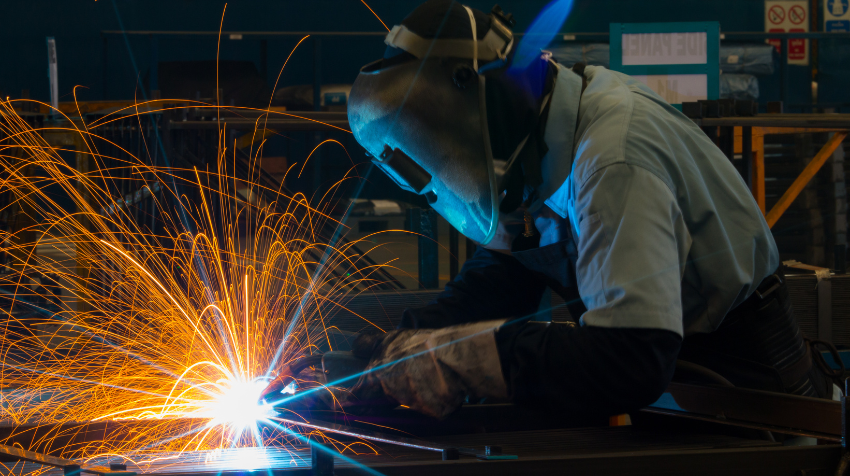Exploring Lesser-Known Welding Techniques: A Deep Dive into Oxy-Fuel and Flux Welding
If you’re a curious welder, you know that there are many different welding techniques out there. While you may be familiar with the most common ones, such as MIG and TIG welding, have you ever heard of oxy-fuel and flux welding? These lesser-known techniques have been around for decades and are still used today in various industries.
Just like how every person has their own unique set of skills and talents, each welding technique has its own strengths and weaknesses. By learning about oxy-fuel and flux welding, you can add more tools to your arsenal and become an even more versatile welder.
In this article, we’ll dive into the specifics of these two techniques, including their applications and tips for mastering them. So let’s get started on your journey to discover the world of oxy-fuel and flux welding!
Introduction to Oxy-Fuel and Flux Welding Techniques
You may not be aware of it, but there are some alternative ways to join metal pieces together that don’t involve the usual methods you’re familiar with. Two of these lesser-known techniques are oxy-fuel and flux welding.
Oxy-fuel welding involves heating the metal with a mixture of oxygen and acetylene gas until it reaches its melting point, while flux welding uses a chemical coating on the surface of the metal to create a protective barrier against oxidation.
When comparing oxy fuel vs. flux welding, there are several advantages and disadvantages to consider for each method. Oxy-fuel is known for producing high-quality welds with strong bonds that can withstand extreme temperatures, making it ideal for industrial applications. However, it requires a high degree of skill and precision to execute properly and can be dangerous if proper safety precautions are not taken.
On the other hand, flux welding is less complex than oxy-fuel and can be done quickly with minimal equipment or training required. However, it produces weaker welds that may not hold up under heavy stress or pressure.
With this in mind, let’s dive deeper into the world of oxy-fuel welding techniques.

Oxy-Fuel Welding Techniques
Get ready to dive into some tried-and-true methods for joining metal that have been used for decades. Oxy-fuel welding is a process that uses oxygen and fuel gas to create a flame hot enough to melt metal. Here are some tips on how to safely and effectively use oxy-fuel equipment:
- Always wear protective gear, including gloves, goggles, and aprons.
- Keep the work area clear of flammable materials and make sure there’s adequate ventilation.
- Check your equipment regularly for leaks or damage before using it.
- Adjust the flame according to the thickness of the metal being welded.
- Use the correct type of filler rod for the metal being welded.
It’s important to remember that oxy-fuel welding can be dangerous if proper safety precautions aren’t taken. However, with proper training and practice, it can be an effective way to join metal pieces together.
Now that you’ve learned about oxy-fuel welding techniques and safety measures, let’s move onto flux welding techniques.
Flux Welding Techniques
Let’s delve into the world of flux welding and discover some powerful yet often overlooked techniques for joining metal together. Flux welding involves using a special chemical compound called flux to clean and protect the metal from oxidation during the welding process.
This type of welding is commonly used in outdoor settings or on dirty, rusty metals because it can handle impurities better than other techniques. One advantage of flux welding is that it produces less smoke and fumes compared to other types of welding, making it a safer option for those who want to avoid inhaling harmful chemicals.
Additionally, flux also allows for stronger welds by removing impurities and preventing oxidation. However, one disadvantage is that it can be challenging to remove the excess flux after completing a weld. Overall, when comparing with other types of welding techniques such as TIG or MIG, flux welding may not produce as clean of a result but still has its place in certain applications where durability and corrosion resistance are important factors.
As we move forward into discussing applications of oxy-fuel and flux welding, keep these advantages and disadvantages in mind as they’ll play an important role in determining which technique is best suited for specific projects.
Applications of Oxy-Fuel and Flux Welding
If you’re looking to expand your knowledge on the applications of oxy-fuel and flux welding, you’ve come to the right place. These lesser-known welding techniques can be incredibly useful for repair and maintenance work, allowing for strong and durable repairs on various metal surfaces.
Additionally, they’re often used in metal art and sculpture, providing a unique aesthetic appeal to these pieces. Finally, these techniques are also utilized in industrial welding applications where strength, durability, and precision are crucial components.
Repair and Maintenance Work
When it comes to repairing and maintaining your welding projects, you’ll want to have a solid understanding of the techniques that are best suited for the job. Oxy-fuel and flux welding techniques can be extremely useful in these situations, allowing welders to complete repairs quickly and efficiently.
Here are five reasons why oxy-fuel and flux welding should be your go-to methods for repair and maintenance work:
- They’re ideal for repairing damaged or worn-out metal parts.
- They can be used to fix cracks or holes in metal surfaces.
- These techniques allow you to join dissimilar metals together with ease.
- They work well on thin-gauge metals, which can be difficult to weld using other methods.
- Oxy-fuel and flux welding produce smooth, high-quality finishes that require minimal post-welding cleanup.
By utilizing these versatile welding techniques, you’ll save time and money on repairs while ensuring that your projects remain structurally sound for years to come.
As important as proper welding safety measures are when working with any kind of welding technique, selecting the right materials is equally critical. When it comes to repair work, choosing the correct filler material is essential if you want a lasting bond between the two pieces being joined. Additionally, make sure that both pieces being welded are clean before starting; this will help ensure a strong bond between them.
With all these factors considered, oxy-fuel and flux welding can significantly simplify any repair or maintenance task at hand.
Now let’s move on to exploring how oxy-fuel and flux welding can also be used creatively in metal art and sculpture.
Metal Art and Sculpture
Now we’re diving into the world of metal art and sculpture, where creativity knows no bounds and sparks fly in a symphony of artistic expression. For those with a passion for metalworking, there’s nothing quite like creating a one-of-a-kind piece that combines form and function.
To do this, you’ll need to have the right tools at your disposal. From plasma cutters to angle grinders, there are many metalworking tools out there that can help you shape your vision into reality. But it’s not just about having the right equipment; mastering artistic welding techniques is also crucial for bringing your designs to life.
Whether using oxy-fuel or flux welding methods, precision is key when it comes to creating intricate details and curves. With these techniques, you can create anything from abstract sculptures to functional pieces of furniture that blend seamlessly with their surroundings. So if you’re looking for a way to express yourself through metalworking, look no further than the world of art and sculpture.
As much as artistic welding can be fulfilling on its own, exploring industrial welding applications opens up even more doors for innovation and creativity. By applying these same techniques in an industrial setting, welders can create everything from large-scale structures like bridges and buildings to intricate machinery components that require precise fabrication.
It’s amazing what can be achieved when skilled artisans combine their love for metalworking with innovative ideas and cutting-edge technology.
Industrial Welding Applications
Get ready to be amazed by the endless possibilities of industrial welding applications, where skilled artisans combine innovation and technology to create incredible structures and machinery components.
One such application is pipe welding, which is used in industries such as oil and gas, construction, and plumbing. Pipe welding involves joining two pipes together using a variety of techniques such as MIG (metal inert gas) welding, TIG (tungsten inert gas) welding, or stick welding. The welder must have a thorough understanding of the properties of the materials being welded and be able to work with precision in tight spaces.
Another fascinating technique used in industrial welding is underwater welding. As the name suggests, this technique involves welding while submerged underwater. It requires specialized equipment and training due to the added risks associated with working in an aquatic environment. Underwater welders are responsible for repairing everything from offshore oil rigs to ships’ hulls. They must possess a unique set of skills that includes diving expertise, knowledge of various types of metals, and proficiency in both wet and dry welds.
Now that you’ve learned about some incredible industrial applications for welding, let’s move on to tips for mastering oxy-fuel and flux welding.
Tips for Mastering Oxy-Fuel and Flux Welding
If you want to become a pro at oxy-fuel and flux welding, these tips’ll definitely light up your welding game.
First and foremost, prioritize welding safety. Make sure you have proper ventilation in your workspace, wear protective gear such as gloves, eye protection, and clothing that covers exposed skin. Additionally, ensure that all equipment’s well-maintained before starting any project. Check for leaks on hoses and regulators, clean the torch tip regularly, and replace worn or damaged parts immediately.
When it comes to mastering oxy-fuel welding specifically, practice controlling the flame by adjusting the oxygen-to-gas ratio until you achieve the desired heat intensity for the metal being welded. Remember to keep the torch moving steadily across the joint while also maintaining an appropriate distance between the metal and flame.
For flux welding, it’s important to choose a flux that matches both your base metal as well as your intended application- whether brazing or soldering. Always preheat metals prior to adding filler material with flux coated rods by heating them evenly with a torch or preheating oven.
With some patience and persistence in following these tips consistently over time, you can develop confidence in utilizing these fiery methods effectively and safely for all of your future projects!

Frequently Asked Questions
What are some common mistakes to avoid when using oxy-fuel and flux welding techniques?
When it comes to welding, there are a few common mistakes that you should avoid at all costs. One of the biggest mistakes is failing to properly clean the metal before beginning the welding process. This can result in weak welds that aren’t as durable as they should be.
Another common mistake is not using enough heat or pressure when welding, which can lead to incomplete welds or weak spots in the final product. To troubleshoot these issues, make sure to thoroughly clean and prep your materials before welding and use proper technique and equipment for optimal results.
With diligence and attention to detail, you can avoid these common mistakes and create strong, high-quality welds every time.
Can oxy-fuel and flux welding techniques be used for welding materials other than steel?
If you’re curious about alternative materials for oxy-fuel and flux welding, there are a few things to keep in mind. While these techniques were originally developed for use with steel, they can also be used on other materials such as aluminum and copper.
However, it’s important to note that the benefits and limitations of oxy-fuel and flux welding may vary depending on the material being welded. For example, while oxy-fuel welding can work well with aluminum, it may not be ideal for thicker pieces or more complex projects. Similarly, while flux welding can be effective with copper, it may require additional steps to properly prepare the surface before beginning the weld.
Overall, if you’re considering using oxy-fuel or flux welding techniques for non-steel projects, it’s important to do your research and carefully consider the specific needs of your project before getting started.
Is it possible to create a strong weld using only one of these techniques (oxy-fuel or flux welding), or is it necessary to use both in combination?
When it comes to welding, a common question is whether to use oxy-fuel or flux welding techniques. Both methods have their strengths and disadvantages to consider.
Oxy-fuel welding can produce a strong weld if done correctly, but it requires more skill and precision than flux welding.
On the other hand, flux welding is easier to learn and produces a cleaner weld with less post-weld cleanup required. However, its strength may not be as robust as an oxy-fuel welded joint.
Ultimately, the decision on which method to use will depend on your personal experience level and the specific needs of your project.
How does the cost of oxy-fuel and flux welding compare to other welding techniques?
You’ve likely heard the old adage, ‘you get what you pay for.’ When it comes to welding techniques, this saying definitely applies.
If cost is a major factor in your decision-making process, you’ll want to know how oxy-fuel and flux welding compare to other options. A cost comparison and efficiency analysis can help shed some light on the matter.
While these two methods may be more affordable than some of the newer technologies out there, they do come with their own set of drawbacks. For example, oxy-fuel welding requires a lot of skill and experience to execute properly, which means that labor costs can be high.
Meanwhile, flux welding has been known to produce less-than-desirable results if not done right. Ultimately, the best choice for your project will depend on a variety of factors – but by taking cost into account upfront and performing an efficiency analysis ahead of time, you’ll be able to make an informed decision and feel confident in whatever technique you end up using.
Are there any safety concerns to be aware of when using oxy-fuel and flux welding techniques?
When it comes to welding, safety should always be a top priority. Whether you’re using oxy-fuel or flux techniques, there are certain precautions that must be taken to ensure your well-being.
First and foremost, make sure you have the appropriate protective gear. This includes a welding helmet with a proper filter lens, flame-resistant clothing, leather gloves, and steel-toed boots.
Additionally, always work in a well-ventilated area to avoid inhaling harmful fumes. Keep your workspace clean and organized to prevent tripping hazards or accidental fires.
Finally, never weld alone – have someone nearby who can assist if needed. By following these safety measures, you can enjoy the art of welding without putting yourself at risk.
Conclusion
Congratulations! You’ve learned about some lesser-known welding techniques, oxy-fuel and flux welding. These methods may not be as common as MIG or TIG, but they’re still valuable skills for any welder to have.
Oxy-fuel welding involves using a torch that combines oxygen and fuel gas to create heat. Flux welding involves the use of a chemical compound that helps prevent oxidation during the welding process. Both techniques have their own unique advantages and applications in various industries.
As you continue to hone your welding skills, consider adding these techniques to your repertoire. With practice and patience, you can master oxy-fuel and flux welding and add even more value to your work.
So why not challenge yourself with something new? Who knows what opportunities may arise from expanding your skill set?
Related Source

